[ZX Spectrum, Sinclair Programs]
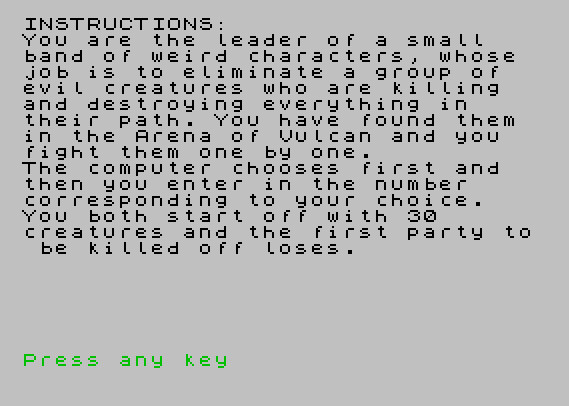
Arena of Vulcan is a simple game that’s neither a wargame nor a tactical game – the category in which it is categorized in SpectrumComputing. Nonetheless, having cleared it during my test run, I could just as well document the experience, particularly as I found it charming.
The objective of Arena of Vulcan is straightforward: you must wipe out a list of 30 creatures in successive one-to-one combats with your own stable of 30 creatures.
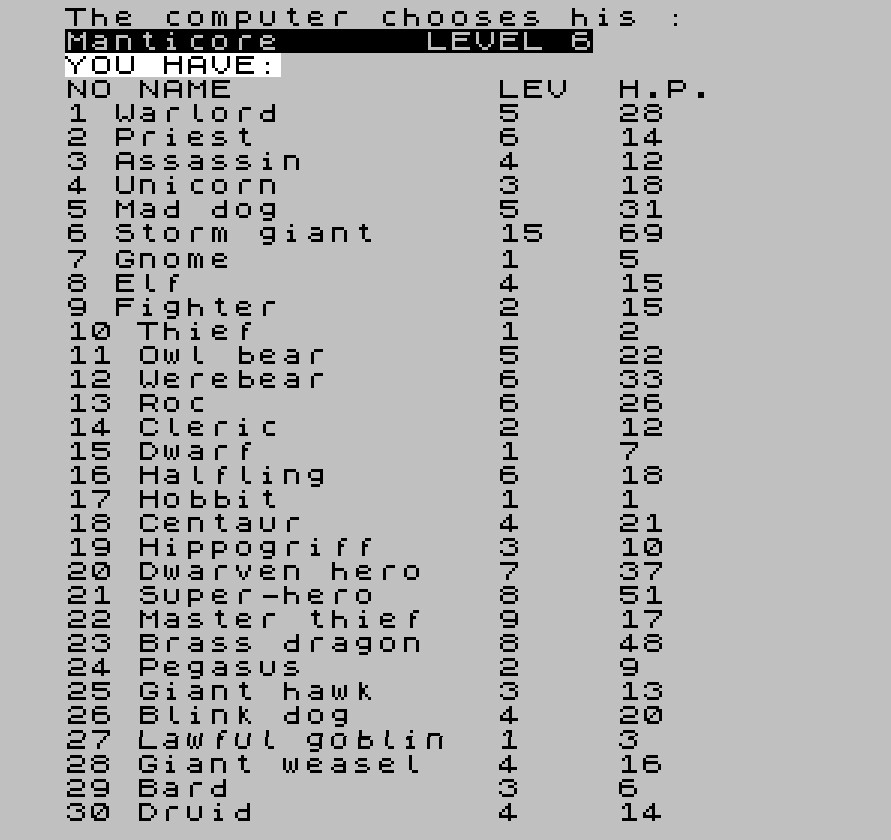
Your 30 creatures are each different, and are spread out between level 1 and level 9, with a level 15 Storm Giant as an outlier. The list and levels are always the same between two games, but the starting HP varies.
For each creature thrown at you by the computer, you must pick one of your own creature for a duel to the death. If you want to not only beat the game but do it with as many points as possible, you need to win duels with creatures of the same level (5 points) or lower level (10 points) than their opponents. However, don’t take a creature of a superior level: you receive 0 point for a creature one level above its opponent, and then lose 5 points for each level of difference beyond that.
For this reason, I pick a level 5 Owl bear to placate my opponent’s level 6 Manticore. It does not go well.

The next combat is against a level 8 Salamander, and my level 7 Dwarven Hero is melted. However, I win the third combat against a level 3 Harpy thanks to my level 2 Fighter.
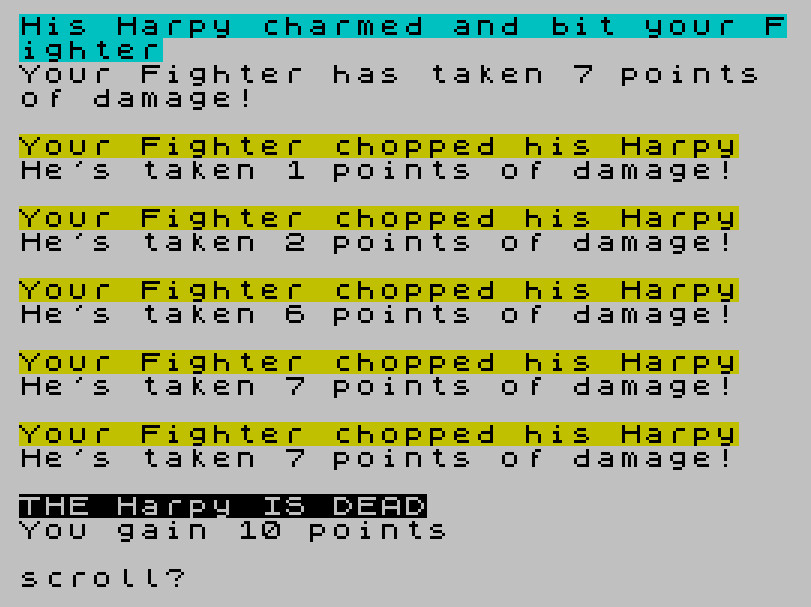
This goes on for a while – units all behave the same, with the exception of the Cleric and the Priest, who can turn undeads, destroying them without combat and granting 50 points on top!
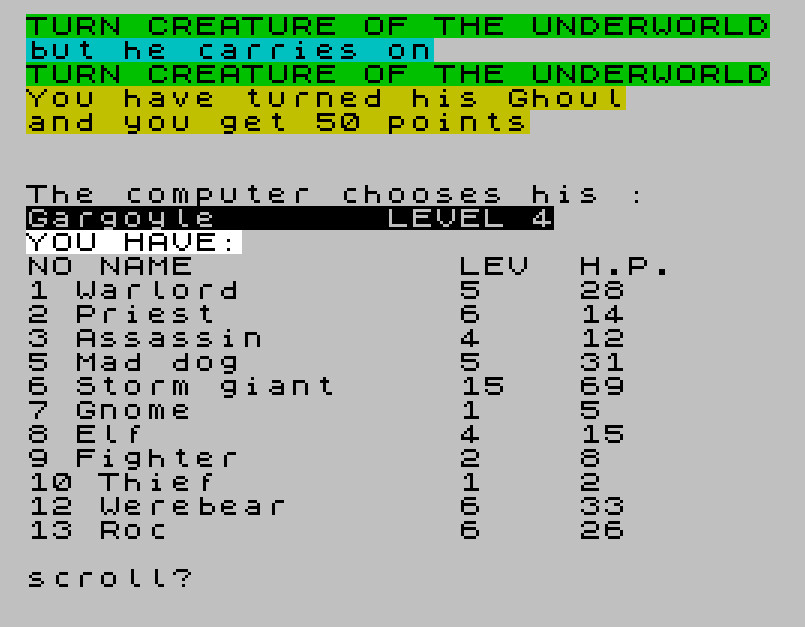
A bit later, my opponent picks his level 15 Cyclops, which was the moment my level 15 Storm giant was waiting for. It is a triumph:
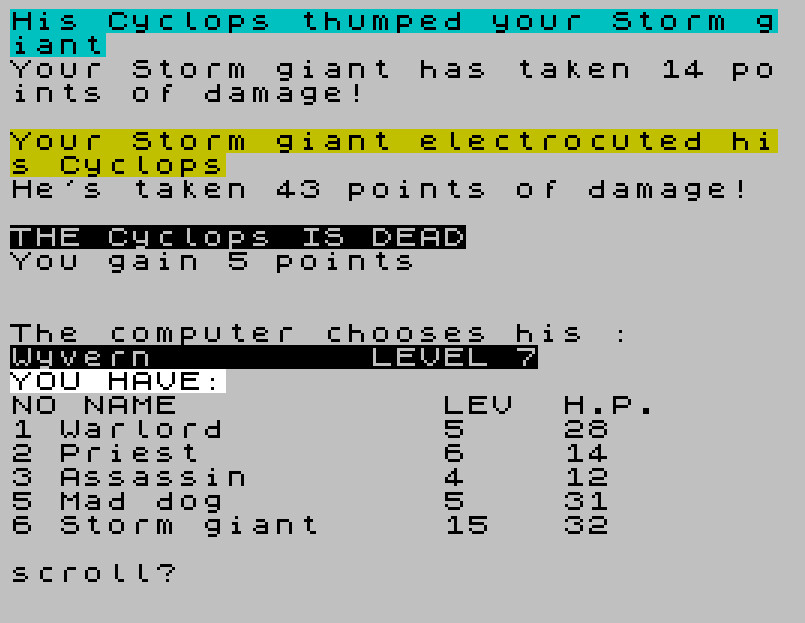
Eventually, as casualties increase, I start to be short-staffed:

In the final stretch of the game, my bench is thin and over-leveled; my points bleed in combat against low level creatures.
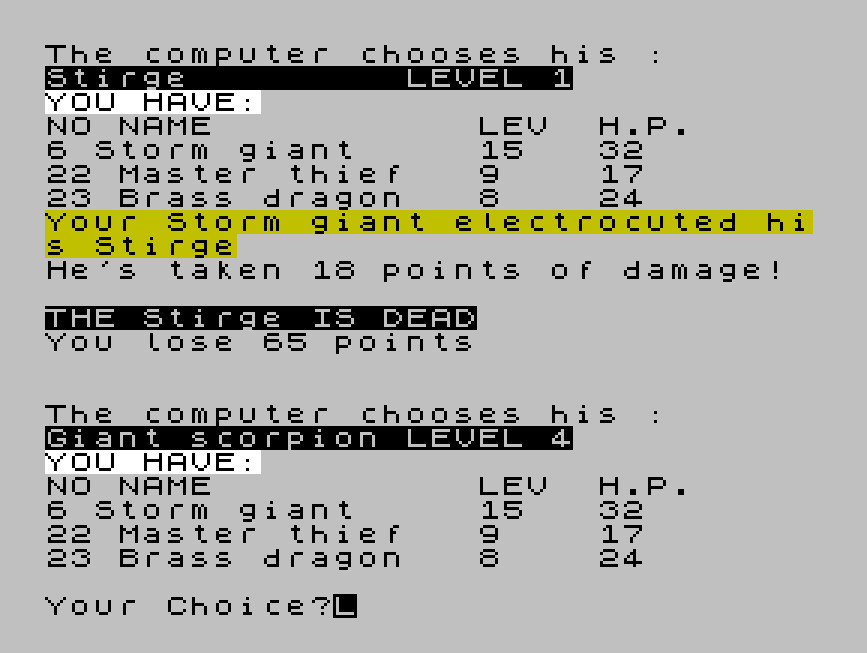
Still, having a surviving Storm giant is a huge advantage to win the game, and I eventually prevail in a final dragon vs giant combat.
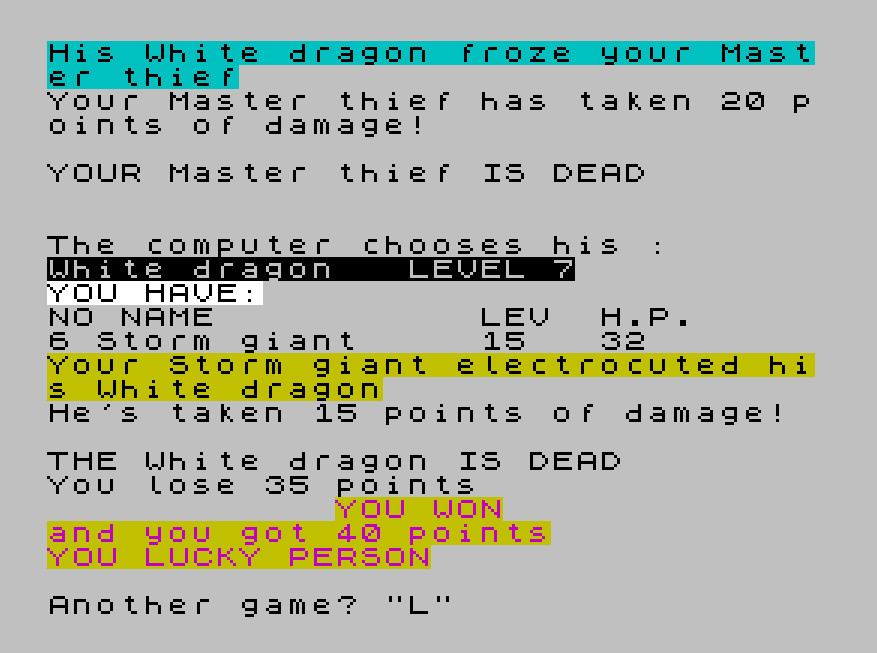
Arena of Vulcan was a type-in game written by Jolyon Ralph and published by Sinclair Programs in March 1984. The code is particularly short: two pages in the magazine but I reckon it could have held in one. This means that while it’s not a good game by any normal metric, its fun-by-line-of-code ratio is excellent.
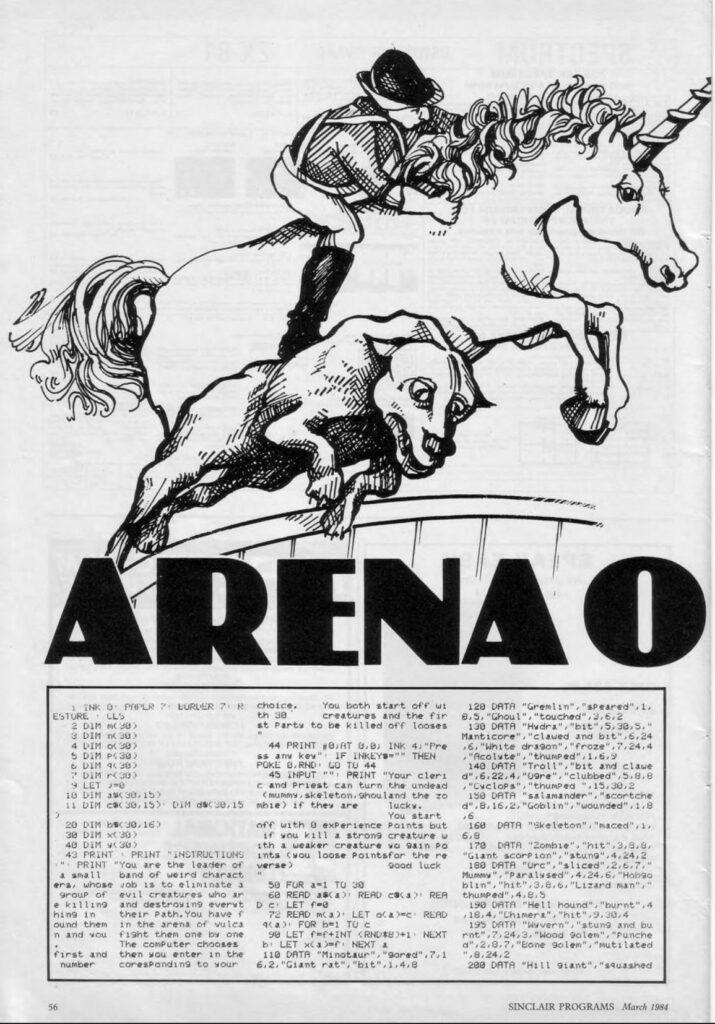

I also find the core idea genuinely interesting. As it was published, with only 3 or 4 stats and only one special power (turn undead), there is no reason to play it a second time. But just imagine if an inspired and time-rich game designer had decided to write a spiritual successor to Arena of Vulcan maybe adding a few special capacities here, sprinkling a few synergies there, and then who knows allowing you to pick several creatures instead of one. Voilà, we would have proto-auto-battlers in the 80s, full-fledged auto-battlers in the 90s and with some luck the genre would be burned out by now! I jest, but it’s a shame that Arena of Vulcan never spawned any heir.